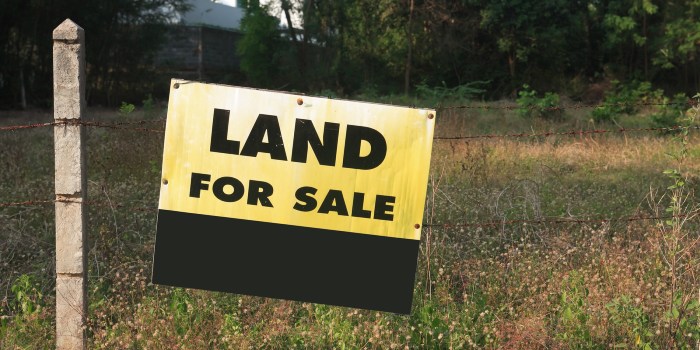According to research conducted by Savills, prices for greenfield as well as urban land have risen in the first quarter of 2022, due to high demand for land to build on.
The research by the property agent suggests that greenfield land has gone up by 1.4% in the first quarter of 2022. Urban or brownfield plots have gone up by 1.3%.
As a result, the annual growth for greenfield land stands at 9.3% and for brownfield plots at 7.2%. This is a huge hike from the previous year when annual growth for greenfield stood at 0.2% and urban plots 1.2%.
The reason for this sharp increase in prices is, according to Savills, due to a high demand for land to build on, coupled with a lack of supply of suitable land.
The land market effectively mirrors the housing market, where high demand and low housing stock have driven up property prices over the past year.
What Is Greenfield And Brownfield Land?
Greenfield land is mostly in rural areas that hasn’t yet been built on, including farmland.
Not to confuse with green belt land though, which is protected land. Normally, this is situated around cities and is protected to conserve the countryside around cities.
In contrast, brownfield land are plots where something has been built, such as factories or other buildings. This is normally located in towns and cities.
Why Is There Such High Demand For Land?
Because the housing market is particularly strong at the moment, it has also influenced regional land values. At the same time, the supply of second hand houses on the market is low, so the demand for new homes has risen.
This rise in demand for new homes has in turn caused the high demand for plots to build on.
Even rising build costs and inflation could not dampen the high demand. Build costs have risen by 6.5% in the first quarter of 2022, mostly due to supply issues and high energy costs.
But thanks to rising house prices, these additional costs are offset, with builders knowing they can make a profit. According to Nationwide, house prices have risen by 14.3% in the year to March 2022.
As with the housing market, a lack of supply of land is also driving up prices for plots to build on. Savills research has shown that in 2021, 16% fewer new houses have received building consent, compared to 2019.
A further reason why the demand is so high is the competition from alternative uses. Industrial and logistics developers are snapping up plots across the country, thereby putting pressure on the land market.
With prices for industrial values being higher than for residential land, many brownfield sites that have planning consent for residential buildings approved, stay in industrial use.
This fierce competition between residential and industrial builds is further exacerbating demand.
Demand from industrial and logistics developers is applying in more areas across the country, putting even more pressure on constrained residential land supply. Strong prices are being paid for industrial land for well-connected sites to major road network access and motorway junctions.
Patrick Eve, Head of Regional Development at Savills
Need For Nutrient Neutrality
The limited supply of plots is also made worse because 74 local authorities in England require a builder to demonstrate the land has nutrient neutrality.
Because local authorities have to assess the environmental impact of each project and can only approve a building project if it will not have a negative impact on the site, many use nutrient neutrality as a measure to decide.
This means that any new residential development has to demonstrate that the nutrient load created through the additional wastewater is mitigated, which can be done through the creation of new wetlands or buffer zones.
As a result, considerably fewer homes have been built due to the negative impact they would have had on the area.
If such policies continue to impact on the supply of land, it is possible that plot prices will rise further.
Will Prices For Land Continue To Rise?
Like with the housing market, Savills predicts that the growth in plot prices will start to slow down in the coming years.
Although the current land market remains buoyant, capacity for further growth is limited. Over the next five years we anticipate slowing growth in land values.
Patrick Eve, Head of Regional Development at Savills
Rising build costs, environmental requirements, such as nutrient neutrality, and new building regulations concerning the standard of new homes are likely to cause the rise in land prices to slow down.
Also, when house prices begin to slow down, the demand for new homes will also slow down and, as a result, the land value growth will slow down.
Other financial pressures, such as the cost of living crisis, rising inflation and energy prices, will in time also impact on the prices of plots, slowing down the high demand for land.




